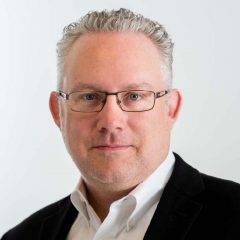4 Key Ways to Message in a Tariff Economy
If you knew in 2020 that COVID was coming, what would you have done differently with your marketing? That's where we are today with tariffs and looming trade wars.
Once again, we marketers are figuring out how to continue marketing amid turmoil and uncertainty. We need to connect with and reassure skittish customers, who are already showing signs of cutting back spending or jumping to different brands. We need to let them know what's happening, how it will affect them and us, and what to expect.
And once again, we're turning to email, for better or worse. I'm here today to help you figure out how to do it better!
My goal with this column isn't to get political about tariffs and economic disruption. Instead, I hope you can use my advice to create a plan to keep your marketing on target as everything else changes around you.
What's the same and what's different?
The supply chain is back in the picture again. Lots of companies are struggling internally with sourcing inventory and raw materials, managing pricing, and trying not to lose market share. They're also trying to figure out how to talk with their customers – a major challenge in a confusing and uncertain landscape.
Today's conversation over pricing is new, and the rules are different for different kinds of companies. Some marketers have to explain why prices will increase, while others are confident they can cover tariff-related price hikes.
Email plays a different role now. During COVID, when stores were closed and many products were not available, we had to find ways to keep people engaged and buying. Today, stores are open, but tariffed products will cost more now, and they might become scarce as inventories empty with no replenishment in sight for now.
We're educators now. During COVID, we relied on outside resources like the Centers for Disease Control and Prevention (CDC) and the World Health Organization for information and guidance. Today, marketers are doing the educating.
We've been thrust into the position of explaining how complex economic issues will affect our business and customers. Few people outside the rarefied world of business economics seem to understand how tariffs work, who pays for them, and what they're intended to accomplish. Customers will be looking to you for help and context.
Some companies are starting to address it. Amazon announced recently that it would itemize the "tariff tax" on affected products in its low-cost Amazon Haul program so customers could see the actual cost. Then it backtracked after vociferous government objections. Last I heard, Amazon apparently shelved it.
That short-lived plan aside, we have a couple of things today that we didn't have five years ago.
One is the experience we gained in the COVID era when we scrapped our annual marketing plan, developed new strategies and tactics, and changed them again and again with little notice.
The other advantage is the power email gained as a fast, flexible and reliable way to communicate with customers – to pass on information and breaking news and build new connections that reflect the realities of the moment.
4 strategies to follow now
Naturally, email isn't the only tool in your bag to help you navigate these choppy economic waters. But email can factor into your decisions and help you achieve your goals in these key areas:
1. Rethink your pricing strategy and messaging
Even if your company won’t get hit with the 145% tariffs on Chinese-made goods, customers are already showing signs that they'll cut back on spending. You might be tempted to switch to a holiday-style strategy of increasing discounts sent via email, either to retain your current customers or capitalize on a competitor.
Beware of this strategy. Tariffs will only increase prices. You can only go so low before you start sacrificing margin. When the discount goes away, so does the customer.
Instead of focusing on discounts, start talking up your product value. What makes your products or brands stand out from the rest? What service do you offer? Use email to remind customers about the value they get when they buy from you. Sure, customers could buy six cheap shirts at Wal-Mart for what they'll pay for one of yours, but remind them about what makes yours worth the money.
2. Have a voice in communications and messaging.
Email marketers need to sit at the table with corporate communications. Let them know you have direct access to thousands or millions of inboxes. You need to know how to talk about tariffs, price or supply changes, and what's going to happen.
Remind your executives about email's ability to push messages directly to customers instead of hoping customers come across them somewhere. Leverage that access and trust to help you control the narrative.
Remind them of the wins your communications strategy scored during COVID in sales, policy and retaining customers.
Honesty and transparency are essential. If your company can afford to absorb tariff increases, email is a prime channel to explain that. Same thing if customers are going to see price increases or potential shortages. Explain when it could happen, why, and on which products. Ramp up your value messaging to remind them why your products are worth the extra money.
Every company that relies on tariffed products or materials will be in the same position. Your messages can help you stand out.
3. Adjust segmentation, messages, and automations to reflect shifts among customer cohorts.
A cohort analysis can identify obvious and subtle shifts among your customer groups and highlight ways to adjust your segmentation strategy. Consider these three important areas:
Manage your frequency. I mentioned above about avoiding the holiday strategy of ramping up discounts and increasing frequency across the board to all of your customer segments. That's a race to the bottom.
Review your customer cohorts and identify those that could handle higher frequency and those who are on the cusp of churning or have simply stopped responding.
Update messaging. Your first task: Revise your out-of-stock plan (messages and automations) if you anticipate empty shelves and long restocking periods. Can you collect email addresses on your website to notify customers when products return to inventory? What about your product recommendation engine? Can it quickly and accurately suggest alternatives, or do you have a customer support team a customer can contact for help?
Also, look at shipping. Is your shipping-exception notice up to date? These unglamorous but essential messages keep your customers informed. Informed customers might not be happy about delays or interruptions, but your transparency and honesty can avoid one less aggravation in their day.
Rethink reactivation and loyalty. Customers will keep their wallets in their pockets and handbags more often as prices go up, especially on luxury or nonessential items. Consider creating a reactivation strategy for high-value customers who change their shopping or engagement patterns abruptly.
In the same vein, look at your loyalty program. It's probably based on purchases. What could you do to both reward customers and prompt them to shop? Shipping rewards, tier upgrades, and the like could bring customers back to shop your available inventory and get over the price-increase barrier.
4. Keep up with the news and connect the dots to your company's needs.
I listed this last, but you need to do this today and every day from now on. You need to know the latest status on each tariff – how much, on which products from which countries and how that will affect your company's purchasing.
Watching or reading the news and tracking developments through specialized trade blogs, email newsletters, and social media can help you pivot quickly to stay on top of sudden changes.
What to do first: Update your contingency plan
Remember your COVID contingency plan? Dust it off or dig it out from your document archive. Update it to include the issues I outlined above, whatever else is relevant to your company, and your 9- to 12-month projections for marketing.
If you don’t have one, pull a plan together now because you will need it to justify your request for a seat at the table with your execs.
We’re not at the point where we throw the plan away for 2025, but we might be close. You have time to pivot. Don’t let it slip by into full-blown panic.
It would be nice if somebody in the C-suite would think, "Hey, remember how email helped out during COVID? Let's get the team up here to do it again!"
That probably won't happen on its own. But a comprehensive contingency plan can be your lever to justify sitting with the decision-makers. Your preparation and far-sightedness will help your company in the near term and garner more respect and purpose for email in the long run.
 Photo by Markus Winkler on Unsplash
Photo by Markus Winkler on Unsplash

 How to resolve AdBlock issue?
How to resolve AdBlock issue? 
 Ryan Phelan is Managing Director of RPEOrigin.
Ryan Phelan is Managing Director of RPEOrigin.